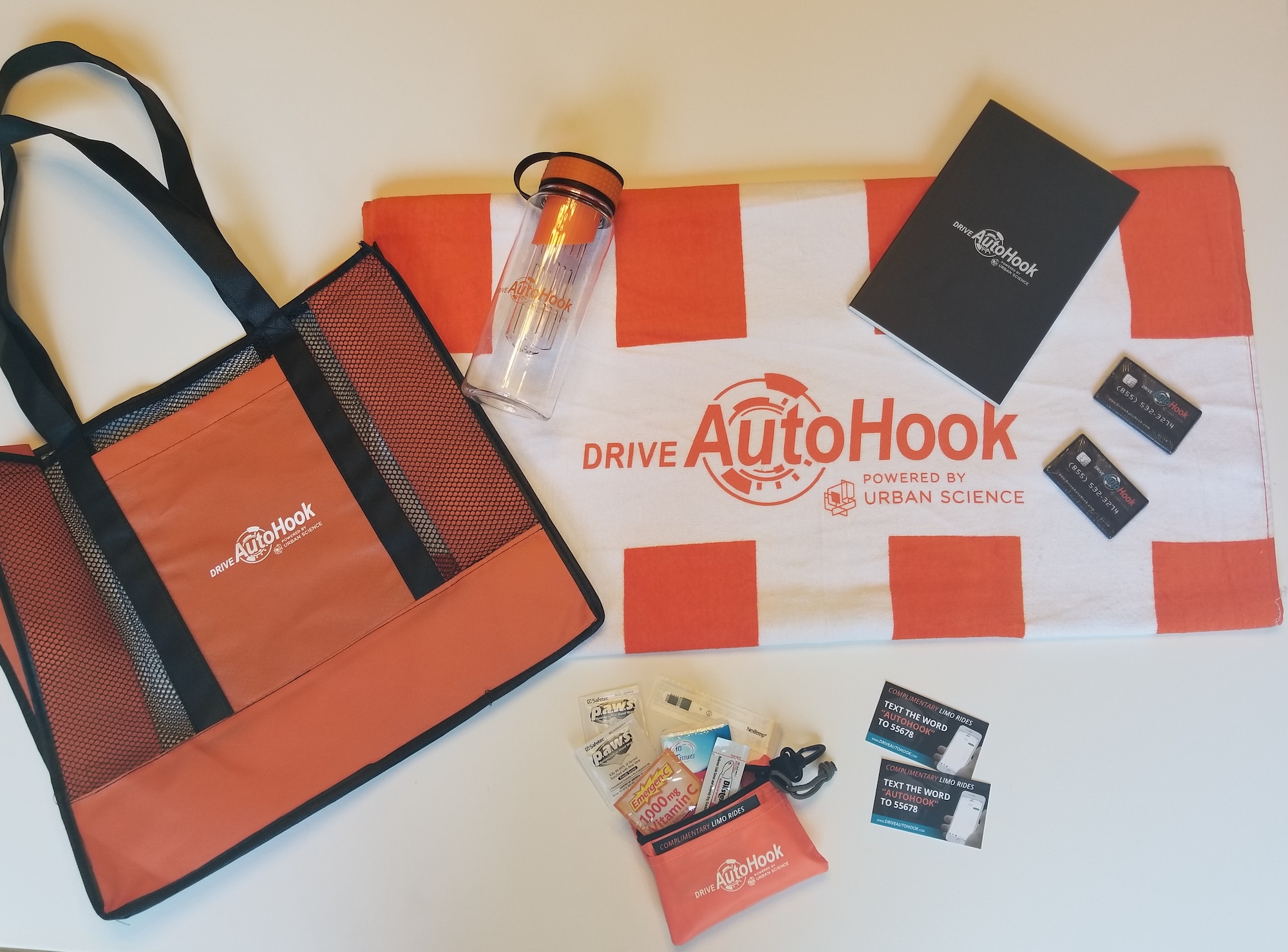1. Sales Attribution > Traffic Attribution
As an industry, we need to entirely shift away from traffic attribution models and really zero-in on sales attribution – that’s where the good stuff is. Traffic attribution only gives you one slice of the pizza. It looks at the traffic that comes to your website and builds marketing strategies based on that alone. Roughly 75% of people that buy cars from you visit your website – so what are you doing to account for the other 25%? Traffic attribution doesn’t tie a sale to that site traffic, where sales attribution directly ties a car sold to the path that led to the sale. Furthermore, we have to factor in the reality that 71% of online users remain anonymous.
Ben Robertaccio, Marketing Director for Morrie’s Automotive Group says, “70% of people come into your dealership without first contacting you. Less than 10% contact you or convert through your website. If we don’t have data on the mass of our customer base, then we need to find better ways to understand them.”
2. There are WAY too many KPIs to realistically keep track of.
Shaun Kniffin, Marketing & Technology Director for Germain Automotive Group shared their recent initiative to define the most important KPIs that exist within all the profit centers of a dealership. “Together we identified 127 KPIs as the key ones to follow. In digital marketing alone, we identified 27 critical KPIs. Our GMs all agree that between 4-16 of those 27 digital KPIs should be looked at on a daily basis.” But how many of them actually do it? Dealers are reported to death. They’re inundated with data and it’s often impossible to know where to start without enlisting the right help.
3. In a perfect world, EVERYONE’S data would reside in CRM.
It would be in the best interest of CRM companies to take into consideration what has made Salesforce so successful and apply that same business model to automotive. For just a minute, take yourself out of our industry. Put yourself in ANY other industry and ALL of the data resides within Salesforce. There are plugins within Salesforce that collectively make it better, more powerful, and virtually indispensable. Salesforce grew exponentially when they opened up those opportunities to make corporations that use Salesforce better. We don’t see that in automotive and that’s a very frustrating thing, and it should be more frustrating to you as a dealer because you are required to live and breathe within CRM every single day.
AutoHook’s data, Clarivoy’s data, everyone’s data should reside in CRM. If we know the behavioral traits specific to the customers in our CRM, our salespeople can simply look at their screen (just like you would in Salesforce) and immediately see every digital destination that customer has passed through. That’s what our salespeople need in order to have much more meaningful, efficient conversations with their customers.
In a perfect world, there would be an independent 3rd party overseeing the validity of everyone’s data, as we know vendor reporting has the potential to be self-serving. But if we know we have clean, accurate data, then we as marketers can easily figure out how to help GMs make much better decisions with their budget.
4. Google Analytics is a great tool…IF it’s set up correctly.
Google Analytics has the potential to be a phenomenal tool, but it can also be complicated, involved and difficult to derive any real actionable insights from. How many GMs go into their GA dashboard every day? Not many. So how can we expect our managers to actually obtain any real value or insights from of GA alone?
Ben Robertaccio advises dealers to have their key goals and conversions set up properly in order to measure what’s actually happening - and that includes SRPs, VDPs, leads, chats, calls, texts, map views, etc. The best reports out there take GA data and feed in multiple other data sources to deliver a clear path towards correcting the flaws in your business.
A great tool is one that’s able to synthesize all the data and turn it into something dealers can actually use. Ben recommends AutoHook’s Traffic Conversion Analysis (TCA) powered by Urban Science data. “TCA feeds in CRM data, new vehicle registration data, our sales data, and what our competitors are selling, and it’s able to show me data like I’ve never seen it before. If we didn’t have TCA, we would have continued to spend, spend, spend, when it reality it was our process that was broken, and TCA was able to make that clear.”
5. There needs to be massive consolidation of analytics tools in the market space.
Because of the intertype competition amongst tiers and players within the automotive vertical, we need to get to the point where dealers can know (or at least have a solid benchmark) of how many cars each vendor will help them sell per month.
Shaun Kniffin reminds us of the ugly truth that, “This industry has more snake oil than any other industry,” and he’s right! Additionally, there aren’t any real standards or benchmarks to let dealers know how they are doing at any given point because of the fact that every dealer and every market is so different. We need to push for more open data sharing, partnerships, and standardization amongst vendors and at all industry levels.
Ben Robertaccio makes another great point when he says, “I see this operational divide across industries: operations vs. marketing. We see it in every industry. But what we need to do is foster an environment where I show you results, you show me results and we work together.”
6. 3rd party listing sites like Cars.com & Autotrader are NOT lead generators.
Leads aren’t everything. Clarivoy Founder & CEO, Steve White says, “Don’t ignore the cumulative effect of the journey that took place to produce that lead.” People don’t just go to Cars.com and submit their information – it’s not that simple. Autotrader, Cars.com, CarGurus all those sites are not lead sources. Their responsibility is to expose your inventory on a grand scale.
Shaun Kniffin happened to be the very first Cars.com customer in Columbus, OH back in 2001. He says, “I’ve never looked at Cars.com as a lead source. A lot of GMs don’t understand how many VDP views these sites generate for their stores each month - it’s more activity than your Search Engine Marketing could produce in an entire year. It’s our job as educators to bring them to the forefront and say let’s put this into perspective – how do you replace all these VDPs? And that’s all part of multitouch attribution. Exposing that inventory is the #1 job of Trader, Cars, Gurus, etc.”
7. Using Last Click Attribution is a lot like…
Clarivoy CEO & Founder, Steve White, made the incredible analogy of comparing attribution to a hangover. “It’s a lot like blaming a hangover on that last beer you had. But in reality, it wasn’t just that last beer, it was the cumulative effect of the 10 other drinks you had before that. So that’s what you have to think about from an attribution perspective. There is a cumulative effect to all of your different marketing touchpoints.” Making really big decisions based on last click is just not the smart thing to do.
8. Dealers suffer from A.D.D.
Which of course stands for, “Another Damn Dashboard.” Every vendor has their own dashboard. The last possible thing today’s dealers want is another report or system to log into. These dashboards have become nothing more than complex conundrums of numbers and statistics that lack meaning and more than anything, lack the ability to execute.
Kniffin says when it comes to their vendors, “I just want to know if you’re involved in the sale. I just want to know are you part of my math, are you part of my chemistry? Are you going to help me attribute more sales? As marketers all we want to know is how can we make these numbers better? How are you who manages my paid search going to make your numbers better and help us optimize our spend?”
9. Hold Your Vendors to a Higher Standard
Ben Robertaccio emphasizes, “We all need to hold our vendors and our partners to a higher standard to make sure they are feeding into our analytics appropriately and ensuring the data they provide us with is pure and valid. In a utopian world, all our vendors would work together openly and all agree on how to measure things.”
10. Don’t rely on your customers (or your CRM) to help with attribution.
If dealers were to ask their customers what their click path consisted of before coming in for a test drive, most people wouldn’t have a clue. The digital journey that takes place leading up to a sale is just that – a journey. It’s something that happens organically, over time, across devices, both at home and on the go.
Kniffin adds, “Single source attribution in CRM – THAT’S frustrating! We’ve challenged every one of the CRM companies out there, and it’s a crowded space, but the truth is, single source attribution does not help us develop a strong marketing strategy, period. And how much of that is really subjective data?”
Ben Robertaccio shares Kniffin’s frustration and follows it up with a good point, "Pretty regularly I don’t remember what I had for dinner the night before so how am I going to remember what traffic source influenced my purchase?”
Thanks to our friends at DealerRefresh, you can check out this panel discussion live from #DSES2017. Click here to watch The Data Doesn’t Lie: Shocking Discoveries in Automotive Attribution on Facebook Live.






























